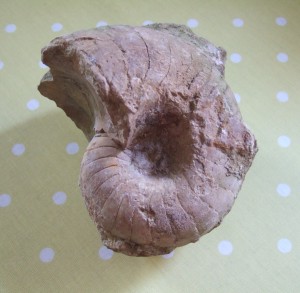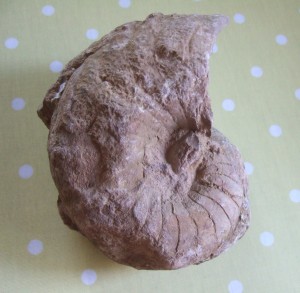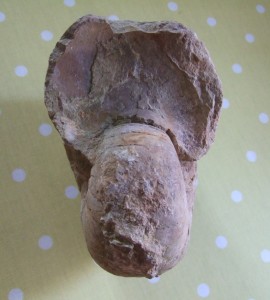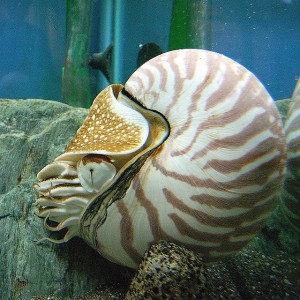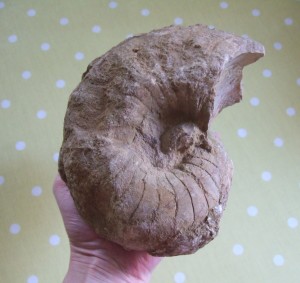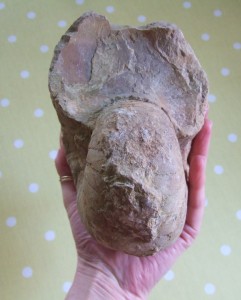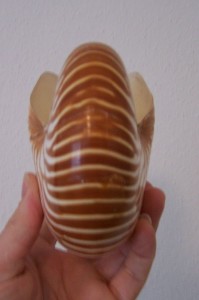Look at this beauty! Chap was given it by a friend the other day. It’s a huge nautilus-like ammonite. Our friend is another historic building conservator, and found the fossil in a weathered and degraded stone that she had to remove from an old building in Sherborne, in Dorset, in order to fit a replacement piece.
The stone is almost certainly Sherborne Stone, a limestone which was quarried close to the ‘new’ Sherborne Castle, and the quarries have been recently reopened. According to the quarry’s website, Sherborne Stone dates from the Bajocian age of the Middle Jurassic, and Wikipedia tells me that the Bajocian lasted from 171.6 to 167.7 million years ago. Looking at the list of ammonite species known to have lived in that near-four million year period, I don’t think I’m going to easily identify it, which is a shame. I’d love to know which species it is.
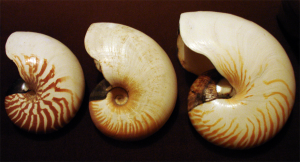
The shells of three present-day nautilus species. Left to right, Nautilus macromphalus (left), Allonautilus scrobiculatus (centre), Nautilus pompilius (right). Photo by User:Mgiganteus1.
Chap and I love looking for fossils. Part of our work in archaeology back in the early 90s involved a lot of fieldwalking (or Surface Artefact Collection, as it later became known)—an archaeological surveying technique that seems to have gone somewhat out of favour (it’s very time and personpower-heavy). Essentially it involves walking line transects spaced at set distances up and down ploughed fields, and picking up everything of archaeological interest, so the distribution of various artefact types and densities can then be plotted. This may be an indicator of below-soil archaeological sites and features such as pits and ditches that have been disturbed by ploughing, activity which has brought the artefacts to the surface. Anyhow, a lot of our fieldwalking was around the Wessex region and so on chalk geology, so we would also find many fossils, mainly echinoids (sea urchins). As these aren’t of archaeological interest, we got to keep them. So we have a great collection of lovely fossilised sea urchins. Even now, when we go for a walk, old archaeological habits die hard and we’re usually scanning the ground for flint flakes and pot sherds (and of course fossils) rather than looking at the view …
